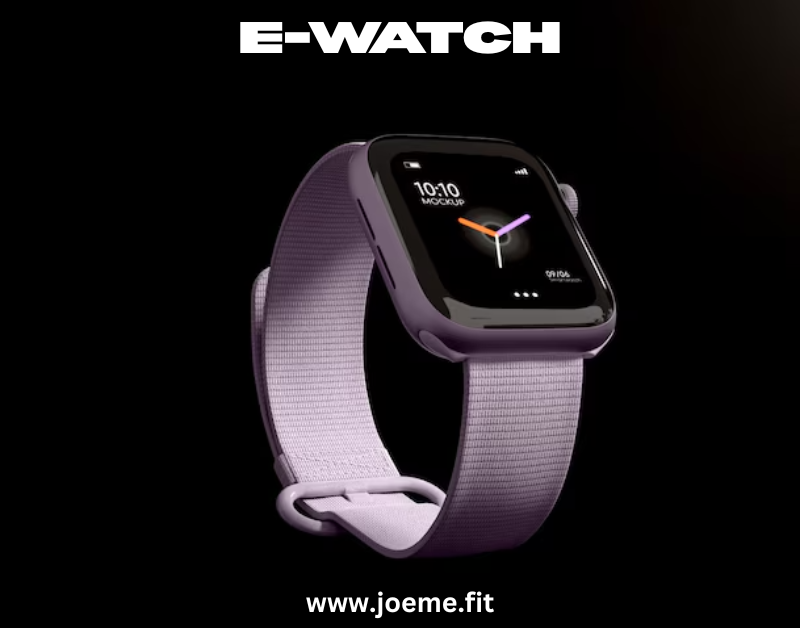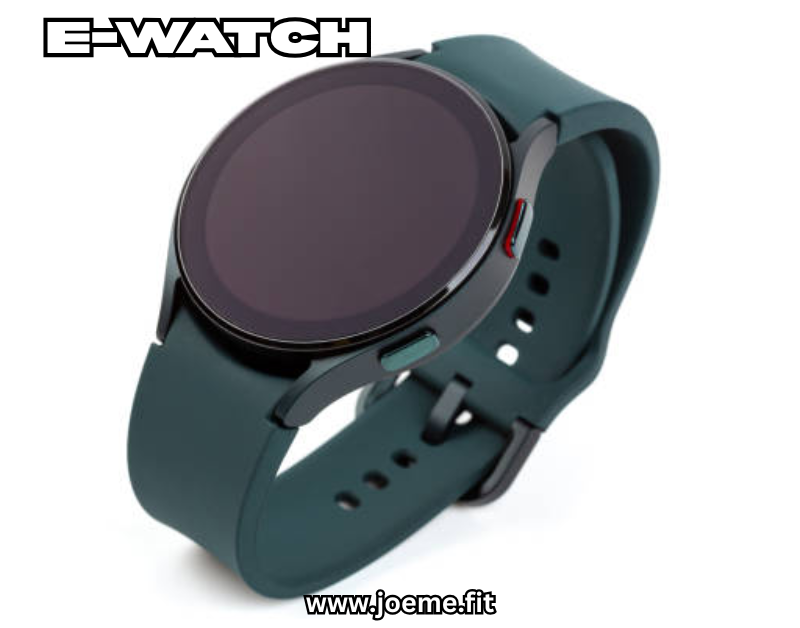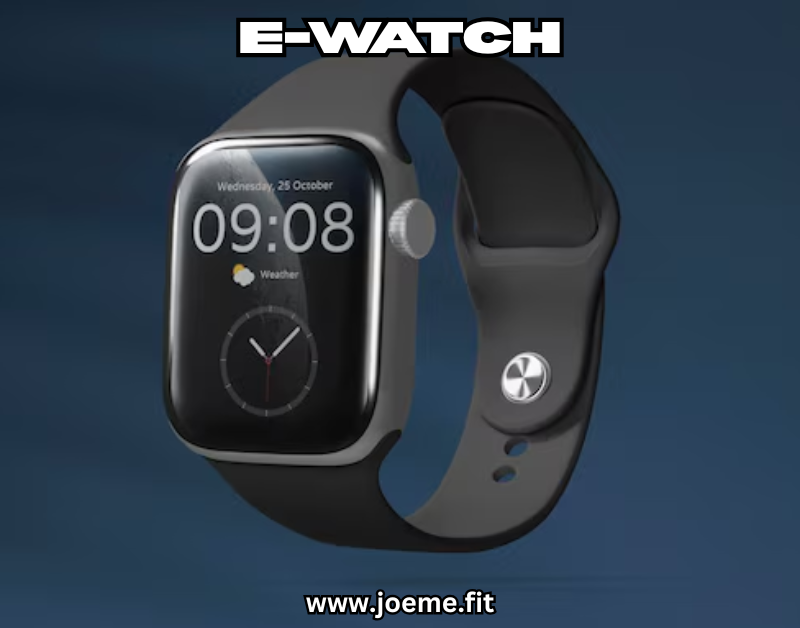Watches are no longer just about telling time. Over the last decade, wearable technology has transformed them into personal companions that track health, connect with smartphones, and improve daily routines. Among the terms gaining attention is the e-watch, a device often mentioned alongside traditional smartwatches but not always clearly defined. Many buyers wonder whether the two are the same or if important differences set them apart.
Understanding these distinctions matters because not every user needs a wrist gadget packed with dozens of features. Some people prefer a streamlined device that focuses on essentials like step counting, heart rate monitoring, and long battery life. Others want a full extension of their smartphone, complete with apps, payments, and advanced health metrics. The right choice depends on knowing what each device offers and how it aligns with personal lifestyle needs.
e-watch What It Is and How It Differs from a Traditional Smartwatch
In this guide we will explain what an ewatch is, how it differs from a traditional smartwatch, and which option may be the smarter investment for you.

What Is an e-watch?
An Ewatch is a modern wearable device designed to deliver digital functions on the wrist while keeping the experience focused. Unlike a regular digital watch that only tells time or shows a stopwatch, this device connects with a smartphone to provide core features such as health monitoring, step tracking, and basic notifications. Visit here!
The primary idea behind this kind of watch is purpose-driven design. Instead of loading the device with multiple applications and complex systems, it emphasizes simplicity. This allows users to access essential tools quickly without distractions.
Key functions often include:
- Time display with digital precision
- Step counter for daily movement
- Heart rate monitoring for basic health insights
- Sleep tracking for rest patterns
- Notifications for calls, messages, or reminders
This makes the ewatch a practical choice for users who want reliable, everyday support without managing a small computer on their wrist.
Traditional Smartwatch Explained
A traditional smartwatch is built as an extension of the smartphone. It mirrors mobile functions and allows users to perform tasks without constantly checking their phone.
Main characteristics include:
- Full integration with apps such as music, maps, and messaging
- Touchscreen controls similar to mobile phones
- Contactless payments through NFC technology
- Voice assistance with AI-powered helpers
- GPS navigation for fitness and travel
According to IDC, more than 140 million smartwatch units shipped worldwide in 2024. This growth reflects their role as multi-tasking devices that blend convenience and connectivity.
The major difference compared to the e-watch is the scope of features. A smartwatch tries to be an all-in-one device, while the other focuses on selected, practical tools.
Core Differences Between e-watch and Smartwatch
To better understand the comparison, here’s a breakdown of the two types of wearable devices:
| Feature | ewatch | Traditional Smartwatch |
|---|---|---|
| Design purpose | Focused on essentials | Built as a mini-computer on the wrist |
| Connectivity | Limited pairing with smartphone | Full mobile integration with apps and services |
| Battery performance | 5–14 days depending on model | 1–3 days on average |
| Health tracking | Basic metrics like steps and heart rate | Advanced monitoring including ECG, SpO2, etc. |
| Cost range | Affordable, usually $50–$150 | Premium, ranging from $200 to $500+ |
| Target users | People seeking simplicity and focus | Consumers who need wide functionality |
This table highlights the practical gap between the two categories. The ewatch is built for straightforward utility, while a smartwatch aims to cover multiple layers of digital life.
Why This Difference Matters
The distinction is not only about technology but also about how people use wearable gadgets. Many users are not looking for endless functions; instead, they value devices that fit into daily life without extra complexity.
For example:
- Fitness enthusiasts prefer a watch that reliably tracks runs or workouts without draining battery quickly.
- Casual users want notifications for calls and texts without spending hundreds of dollars.
- Professionals may need advanced productivity tools, making a traditional smartwatch the better choice.
Understanding this difference allows users to align their purchase with lifestyle needs rather than just following trends.
Battery Life and Performance
Battery life is one of the most noticeable contrasts.
- An ewatch usually lasts 5 to 14 days on a single charge because it runs on energy-efficient displays and limited background processes.
- A smartwatch, packed with apps, voice assistants, and GPS, typically lasts 1 to 3 days.
For users who dislike frequent charging, the longer battery cycle of an ewatch becomes a major benefit.
Performance is also tied to simplicity. By avoiding heavy multitasking, these devices run smoothly without lag, offering consistency for everyday monitoring.
User Experience and Simplicity
Ease of use defines the ewatch. Menus are clear, navigation is straightforward, and the focus is on quick access. This appeals to people who want to spend less time adjusting settings and more time using the watch.
Smartwatches, in contrast, replicate smartphone-like experiences. While powerful, this often requires learning curves, updates, and regular adjustments.
A simple interface reduces distraction and keeps the device user-friendly for people of all ages.
Cost Considerations
Price plays an important role in decision-making.
- e-watch: Generally between $50 and $150 depending on features.
- Smartwatch: Entry models start at $200–$300, while premium models go beyond $500.
For first-time buyers, the lower cost of the ewatch makes it an attractive entry into wearable technology. For professionals or tech-savvy users, smartwatches justify their higher cost with advanced functions.

Health and Fitness Tracking
Health remains the top reason why people adopt wrist technology.
ewatch covers basics:
- Step count
- Heart rate
- Sleep tracking
- Calorie burn estimation
Smartwatch goes deeper:
- ECG monitoring
- Blood oxygen level measurement
- VO2 max analysis
- Guided workout programs
A report from Statista highlights that 35% of wearable users prioritize fitness tracking over all other functions. This data shows why both devices remain in demand, each serving a different depth of need.
Productivity and Lifestyle Integration
A smartwatch acts as a digital hub on the wrist. It supports:
- Calendar reminders
- Email access
- Voice assistants
- Contactless payments
- App notifications
The ewatch, however, keeps lifestyle functions minimal. It may show incoming alerts or reminders but does not aim to replace the smartphone. This design helps reduce dependency and keeps focus on health and time functions.
Market Data and Trends
The wearable device market continues to expand with clear segmentation:
- Smartwatches dominate premium sales. Apple, Samsung, and Garmin lead global shipments.
- E-watch adoption grows in cost-sensitive markets. Asia and emerging economies are showing higher demand due to affordability and longer battery life.
- Global wearable growth rate: Forecasts suggest a 9% CAGR until 2028, with smartwatches holding a larger revenue share, but simpler devices showing higher unit sales.
This division shows that both segments will continue to grow, each serving different consumer needs.
Choosing the Right Device for Your Needs
The choice comes down to priorities.
Choose an Ewatch if you want:
- Long battery life
- Affordable pricing
- Simple health tracking
- Basic notifications
Choose a smartwatch if you want:
- Advanced health monitoring
- App support and productivity tools
- Payment options and GPS navigation
- Rich mobile integration
By comparing lifestyle needs with available features, users can make a clear decision without overspending.
FAQs
Q1. Is an e-watch the same as a smartwatch?
No, the ewatch is a simpler, focused device, while a smartwatch offers broader mobile integration.
Q2. Can an e-watch replace a smartphone?
No. It only complements a phone by showing alerts or fitness data.
Q3. Which one is better for battery life?
An e-atch can last up to 14 days, while most smartwatches last 1–3 days.
Q4. Do both support fitness tracking?
Yes, but the e-watch focuses on basics, while smartwatches deliver advanced insights.
Q5. What’s the main factor to consider before buying?
Decide whether you want simple health and time functions or full mobile extension features.

Conclusion
The rise of wearable technology has created two clear paths for users: devices built for simplicity and those designed for full connectivity. The e-watch represents the first path, focusing on long battery life, affordable pricing, and practical features like fitness tracking and essential notifications. It fits the needs of people who want a reliable companion without the distractions or costs of a fully integrated system.
Traditional smartwatches, on the other hand, serve as powerful extensions of smartphones. They support apps, payments, voice commands, and advanced health analytics, making them ideal for professionals, tech enthusiasts, and anyone seeking an all-in-one wrist device.
The choice between the two is less about which is better and more about which fits your lifestyle. For some, a focused and dependable wearable is enough. For others, complete integration is worth the investment. By knowing the strengths and limits of each option, you can make a decision that adds real value to your daily routine.